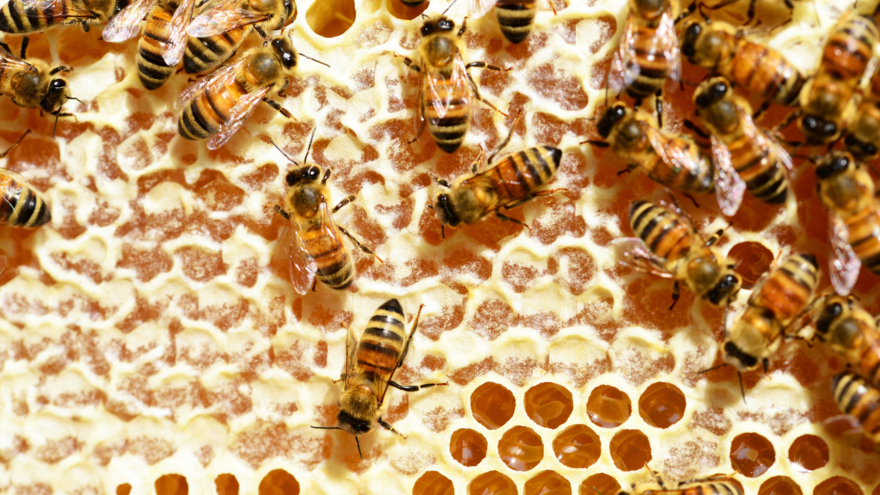
Save the bees (and other pollinators) in your own backyard.
We all depend on pollinators for the quantity and quality of our food. Approximately one-third of our food crops rely on animal pollinators for reproduction. In our ecoregion, the Laurentian Mixed Forest Province, pollinators support crops like apples, cucumbers, soybeans, squash, and asparagus. Pollinators also support resilient and biodiverse wildlife.
However, pollinator populations around the world are plummeting. Threats like habitat loss, disease, and excessive use of pesticides harm important pollinators like bees, butterflies, moths, flies, hummingbirds, and beetles. You can support pollinators by creating a safe and nurturing environment in your yard.
The three most important things you can provide in your yard for pollinators are food, water, and shelter. To support food for pollinators, you can plant different types of native plants and flowers. Try to group them together to increase pollination. Some examples of native plants in Northern Minnesota include calico aster, wild lupine, and herbs like thyme. For shelter, create different canopy layers by planting trees, shrubs, and other plants of different sizes. You can provide water for pollinators by leaving a clean, reliable source of water through infrastructures like pools, ponds, and small containers of water.
Other tips to provide pollinator support in your yard include:
- Mow less - Try mowing every two or three weeks to allow bees and other pollinators to capitalize on any flowering plants that might crop up.
- More gardens, fewer lawns - Lawns are nutrient deserts for many pollinator species. By using more of your lawn space for gardens, you provide more habitat for pollinators.
- Utilize blooming seasons - Plant flowers with staggered bloom times so that pollinators can continue pollinating your space for a longer period of time.
- Avoid pesticides - Many pollinators, like bees, end up carrying pesticides from gardens to their hives, which can severely harm their populations. To control pests, add more! Letting other insects into your garden can help handle pest levels.
- Imperfection is key - Damaged leaves, buds, and flowers are good. They mean that pollinators and insects are using your garden, so find beauty in imperfect gardens!
One group is working across the Midwest and Great Lakes to increase pollinator habitats and populations. Project Wingspan is a 3-year native seed collection and distribution project that is focused on increasing habitat for pollinators like the Monarch butterfly and our endangered! state bee, the rusty patched bumblebee. UMD is partnering with Project Wingspan to help recruit volunteers and do seed collection. If you'd like to help collect seed in Minnesota or one of Project Wingspan’s other target states, use this link to sign up to become a trained and certified volunteer, and the local State Coordinator will get you started! For more information, visit them on Facebook, Instagram, and Twitter.
Many pollinators are in danger as their habitats decrease. By incorporating native, pollinator-friendly plants into your green space, you can help these essential animals improve resiliency.